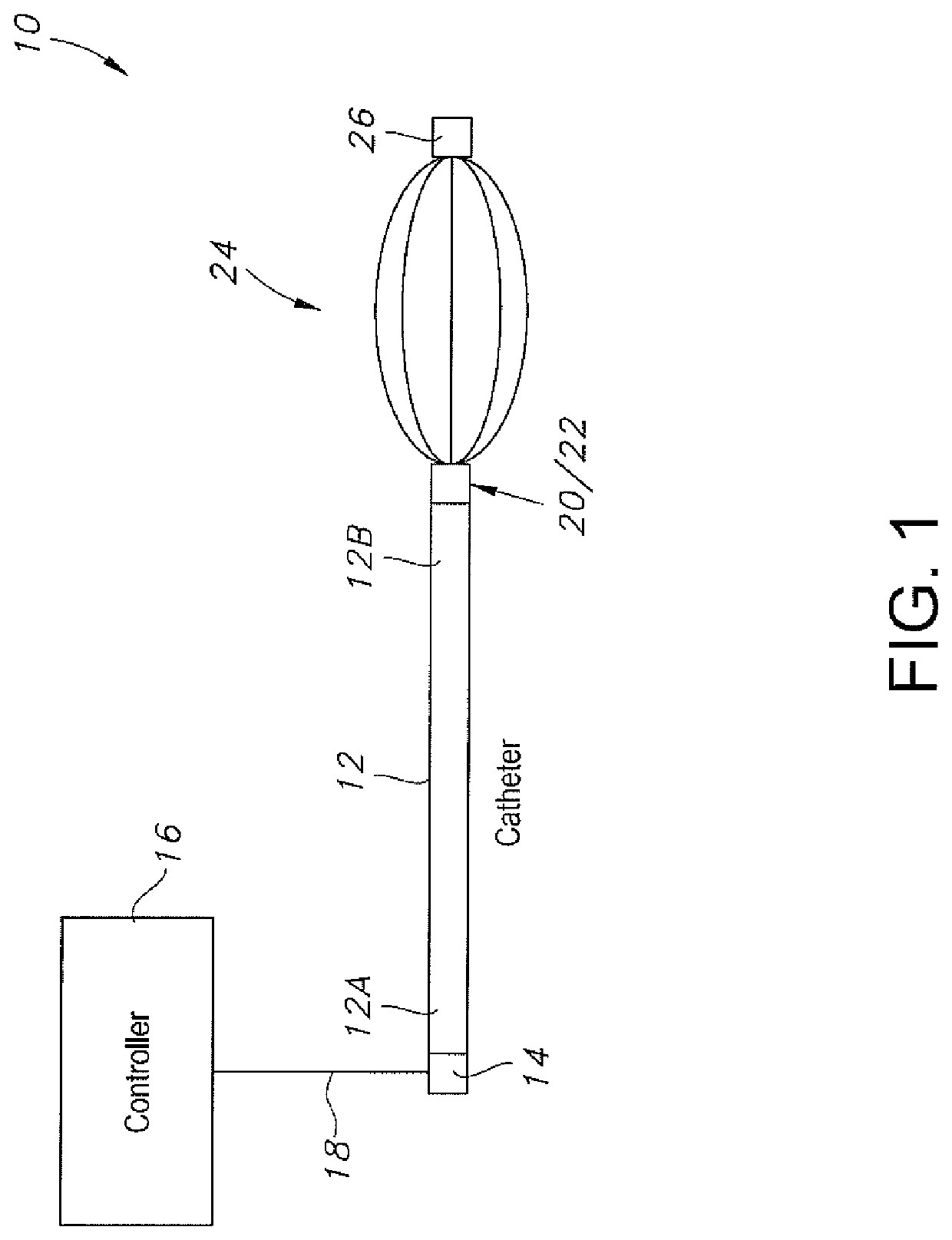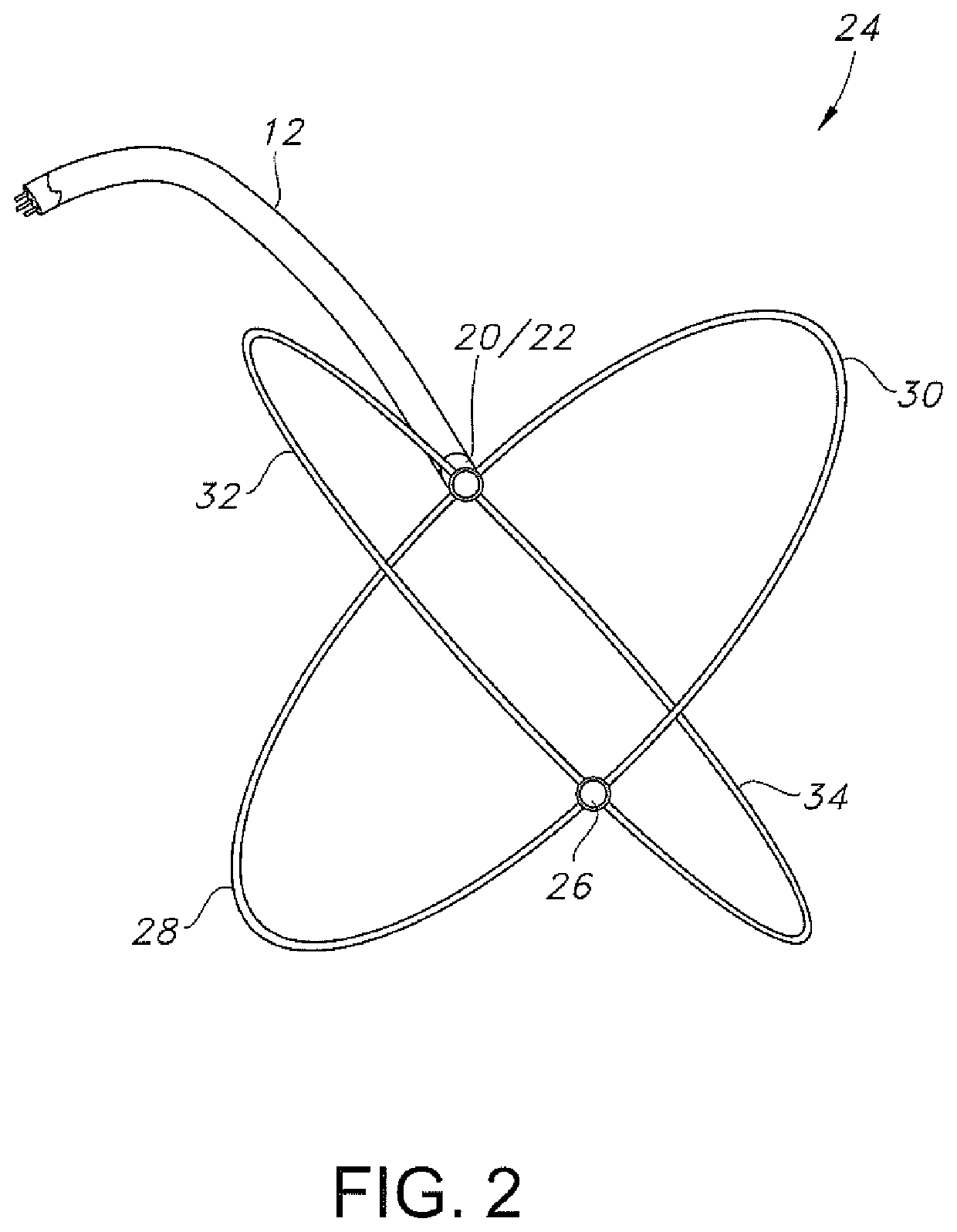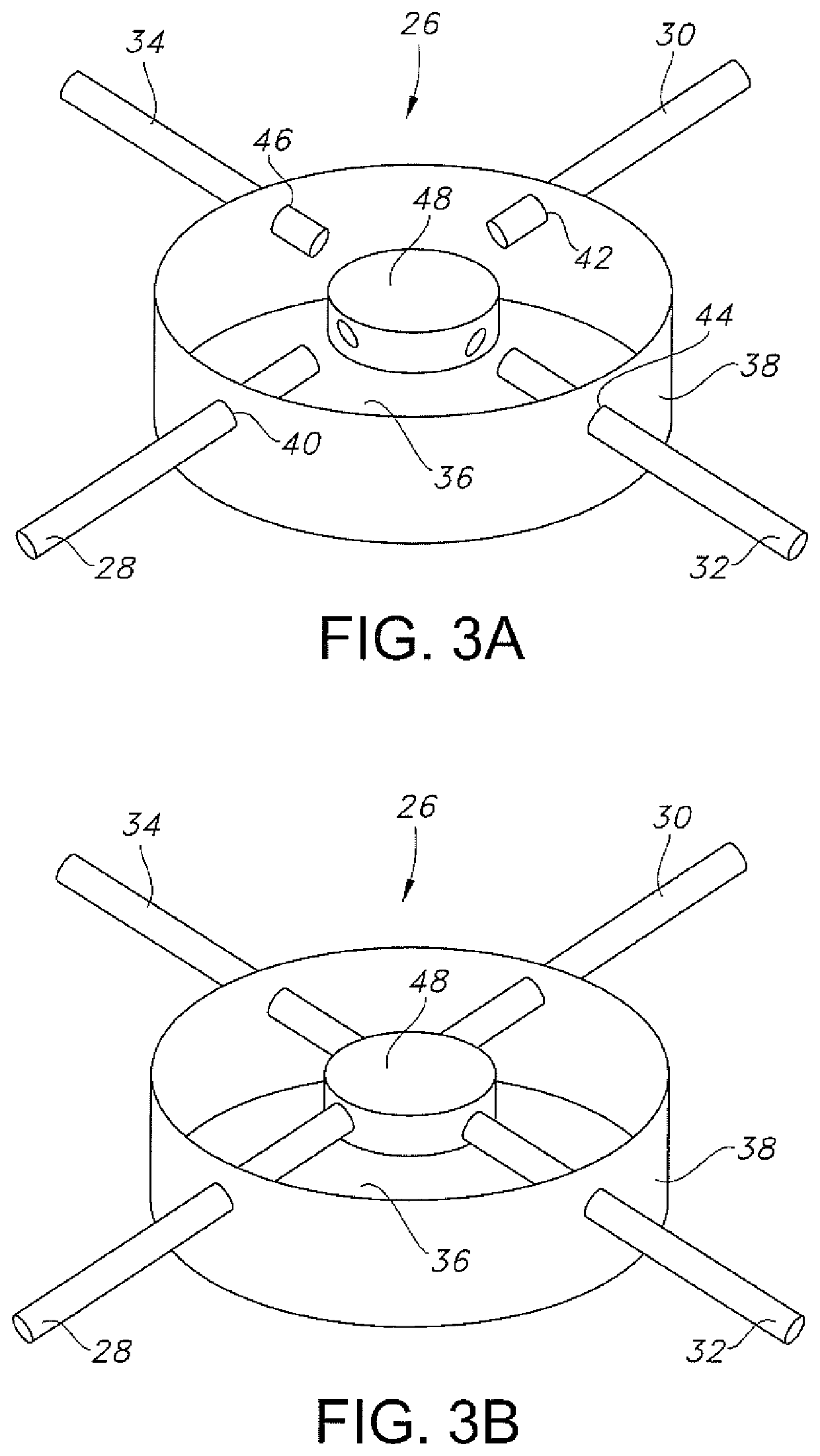Basket-type ep catheter with electrode polling for sequential electrode sampling
a catheter and electrode technology, applied in the field of medical devices, can solve the problems of depolarization waves, atrial arrhythmias can create a variety of dangerous conditions, irregular heart rate, loss of synchronous atrioventricular contraction, etc., and achieve the effect of allowing for other structures or lumens to be sampled
- Summary
- Abstract
- Description
- Claims
- Application Information
AI Technical Summary
Benefits of technology
Problems solved by technology
Method used
Image
Examples
Embodiment Construction
[0030]As used herein, the terms “sampling sequence”, “consecutive electrode sampling sequence” and “consecutively sampling” mean that the electrodes on a spline or a number of splines forming a spline system are sampled in a consecutive manner with a second or next electrode being sampled following sampling of a first electrode or an electrode located immediately before the second electrode without interruption.
[0031]Commercially available basket-type EP catheters have many electrodes. For example, there are basket-type EP catheters that have eight electrodes on eight splines for a total of 64 electrodes or 16 electrodes on eight splines for a total of 128 electrodes. Conventional systems require a separate voltage-out (Vout) conductor for each electrode. The dedicated Vout conductor passes voltage from an electrode to signal analysis hardware connected to the proximal end of the catheter. This means that there is a separate Vout conductor connected to each electrode of a spline and...
PUM
 Login to View More
Login to View More Abstract
Description
Claims
Application Information
 Login to View More
Login to View More - R&D Engineer
- R&D Manager
- IP Professional
- Industry Leading Data Capabilities
- Powerful AI technology
- Patent DNA Extraction
Browse by: Latest US Patents, China's latest patents, Technical Efficacy Thesaurus, Application Domain, Technology Topic, Popular Technical Reports.
© 2024 PatSnap. All rights reserved.Legal|Privacy policy|Modern Slavery Act Transparency Statement|Sitemap|About US| Contact US: help@patsnap.com










